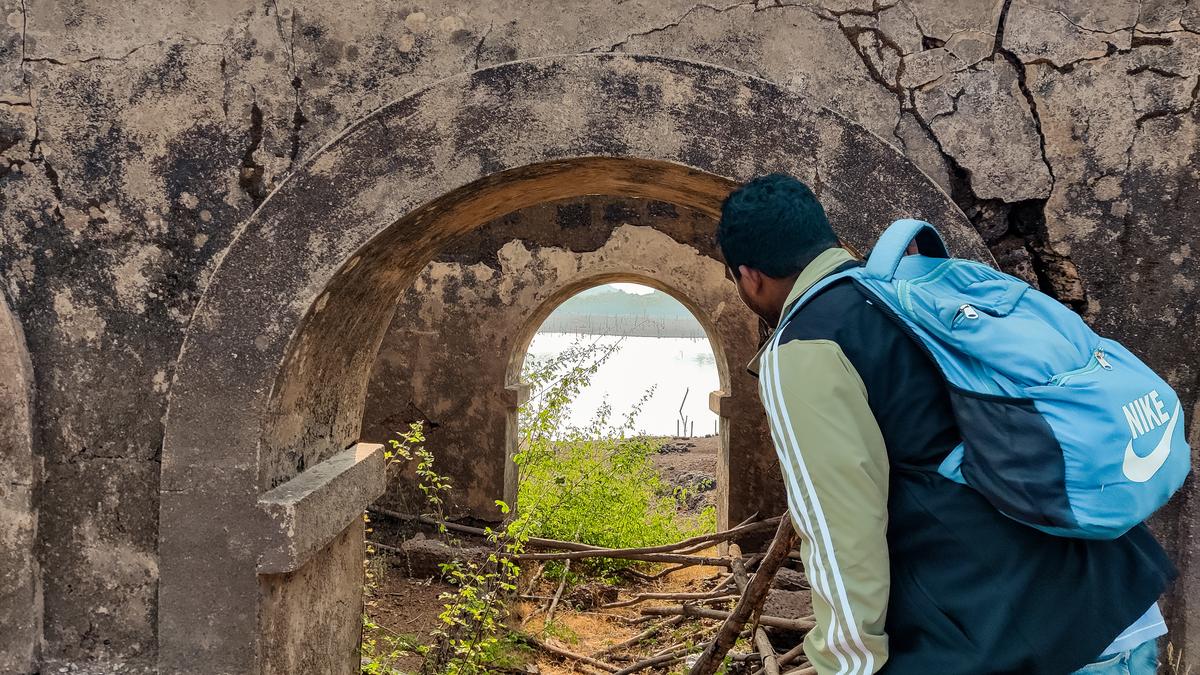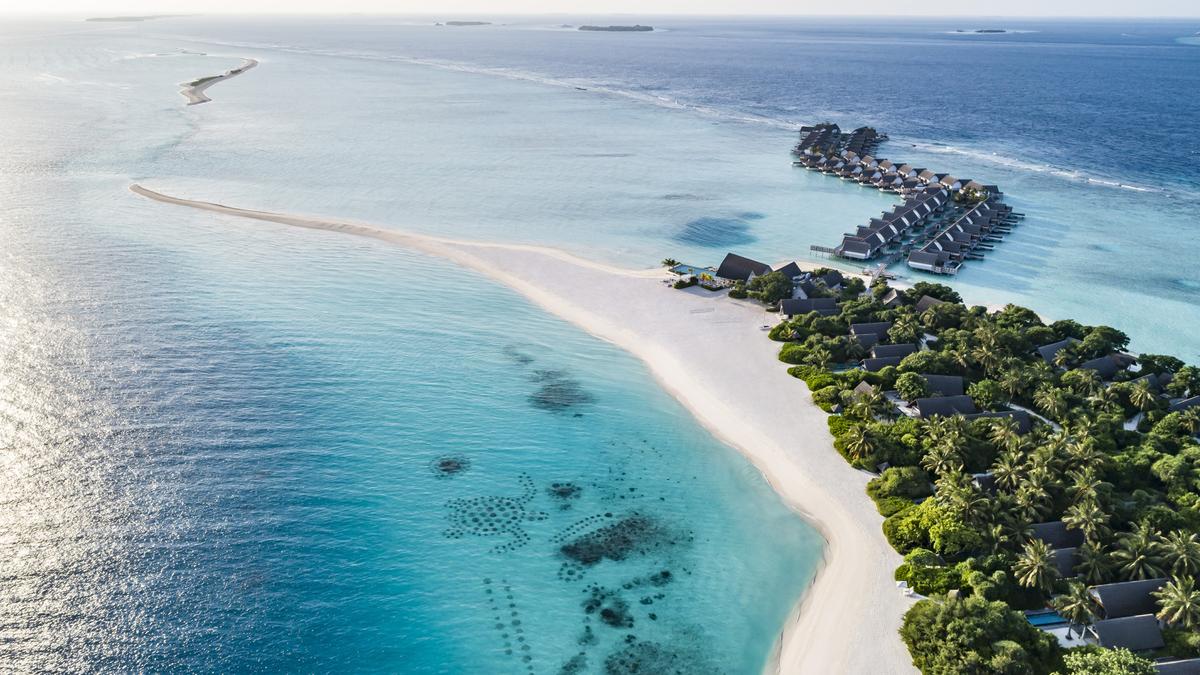The once thriving village, home to several temples and archaeological finds, comes alive for its annual temple festival between April and June
It is a blistering, hot April day in Goa and the sun is merciless.
We have just arrived in Curdi…the submerged village that emerges only between April and June every year. I look down at my feet and see deep, gaping cracks fanning out on the dry and arid land. It looks parched.
As a reprieve from the overbearing heat, sweet strains of music cut through the sultry heat and seem to travel to us from far away. We listen rapt. “The music ceremony has begun in the temple,” announces Pankaj Kamble, our young and raring-to-go storyteller cum tour ambassador from Soul Travelling.
His stories about Curdi are plentiful. Looking around, he points to the home of renowned classical vocalist Mogubai Kurdikar, born here in 1904, also known as the mother of the well-known singer Kishori Amonkar.
“Curdi was a thriving, bustling village and the inhabitants, now displaced, come visiting their lost homeland every year in the summer months,” says Pankaj.Soul Travelling has been conducting storied trails around this village every Sunday during the summer, and there has been a rising popularity, thanks to social media.
Visitors exploring Curdi
| Photo Credit:
Soul Travelling
Today, there is a buzz as we see cars stopping by and people spilling out in droves. The temple is at a distance, but the colourful festoons surrounding it, make it look ceremonious. This is the Shree Someshwar Temple and the annual festival that takes place on the third Sunday of May happens to be today. The temple is dedicated to Lord Shiva, and perhaps the only structure, a relic from the past, that still remains intact.
Upon arriving in Curdi, we first stop at the Portuguese Checkpost, draped in thick ivy and other wild creepers, a nod to its glorious past. This meant that the village was one of considerable significance during its yesteryears. We are regaled with stories from Curdi as we stand facing the ruins of the Panchayat building, post office and what appeared to have been a school. Afterwards, our group scatters to discover numerous tulsi pedestals that belonged to private home courtyards.
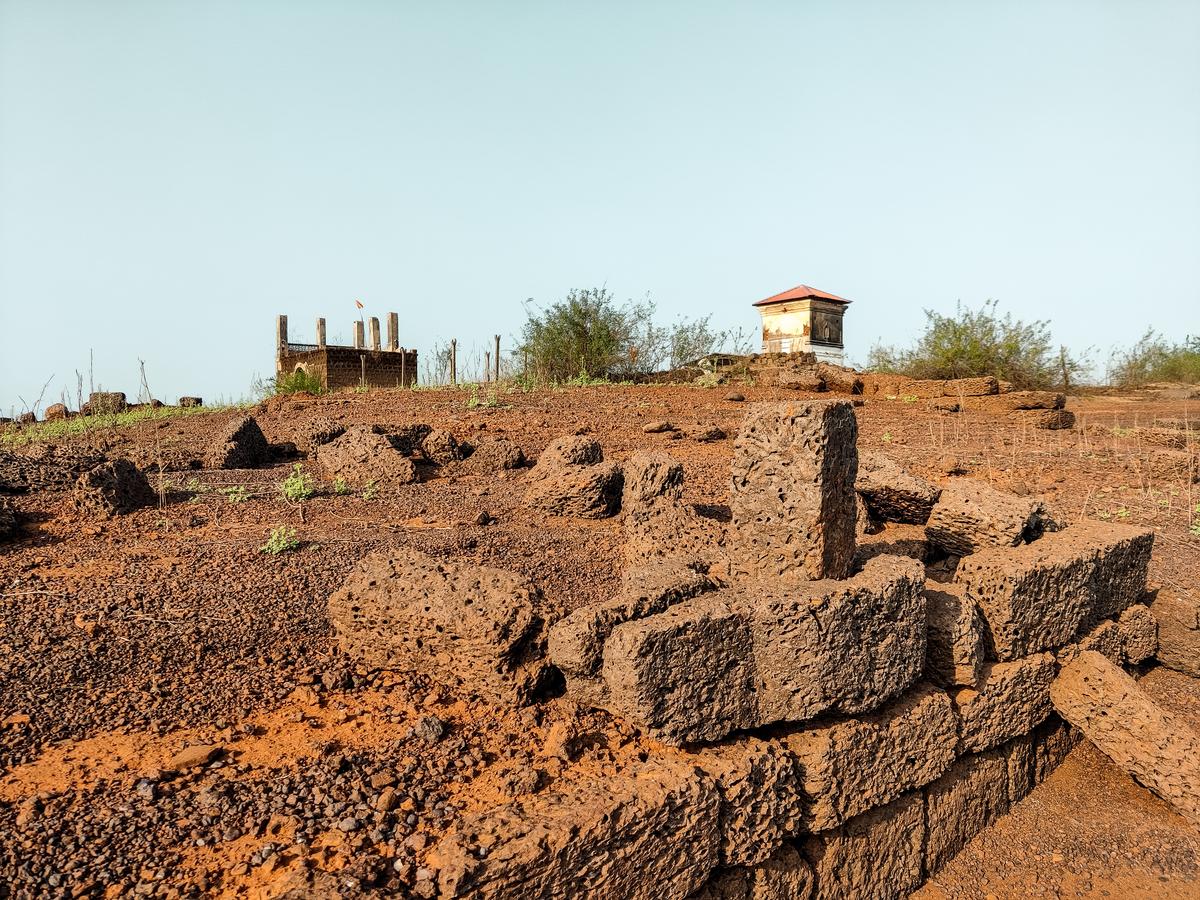
Legend has it that Curdi once yielded the most sought-after fruits and cashew nut harvests, year after year
| Photo Credit:
Soul Travelling
Legend has it that once upon a time, this was a village of flourishing abundance, the bounty of its agriculture, nourishing many families. So fertile was the land that it yielded the most sought-after fruits and cashew nut harvests, year after year. Today, the parched surroundings are testimony to the fact that Curdi gave in to the swell of the river when the Salaulim Dam water rose.
Curdi’s story is one of remembrance.
When the Salaulim Dam project was commissioned by Goa’s first Chief Minister Dayanand Bandodkar, the villages and hamlets around Curdi, namely Kurpem and other smaller wards like Dhapode, Kaman, Unan, Karemal, Stristal, Akrimal, Talsai, etc. in the Sanguem taluk were in peril. At first, the inhabitants would not take it seriously, but when the water level started rising at an alarming rate, people abandoned their houses and fled. “I was only 15-years-old at that time, but remember leaving hurriedly to an uncertain place with my grandfather, parents and two sisters. We had to leave everything behind and start all over again,” reminisces 57-year-old Ajay Curdikar, who runs his catering business from nearby Vaddem. Here, many former residents were reinstated between 1983 and 1986, with a Government grant of 10,000 square metres of agricultural land and 400 square metres of land for housing purposes.
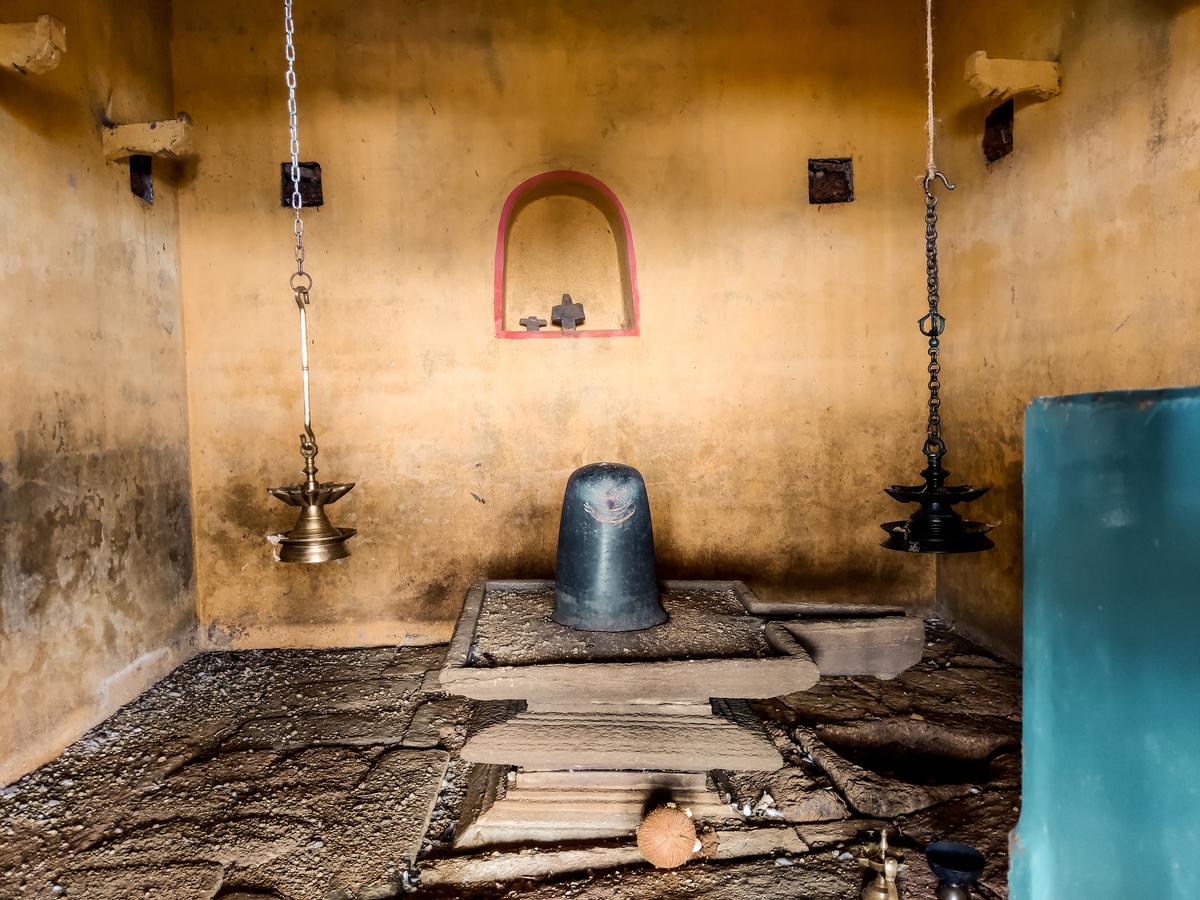
The Shivalinga inside the Shree Someshwar Temple
| Photo Credit:
Soul Travelling
Each year, during the Someshwar Festival, Ajay Curdikar, his sisters and their families, along with other Curdi residents, gather at the temple for a day of music and feasting. Thousands of people, some from nearby Karnataka, and those who had any ties to Curdi, would visit the temple during that day to reminisce, soak up a day filled with classical ragas and enjoy a hearty feast, where the star dish was the famed khatkhate, a Goan vegetarian stew made from local, seasonal vegetables and spices.
Exploring Curdi is not a new thing, but has gained momentum in the last few years, reveals archivist Balaji Shenoy, 32, who used to conduct such walks here in 2014, right after finishing his college degree. He now works for the Government of Goa’s Department of Archaeology.
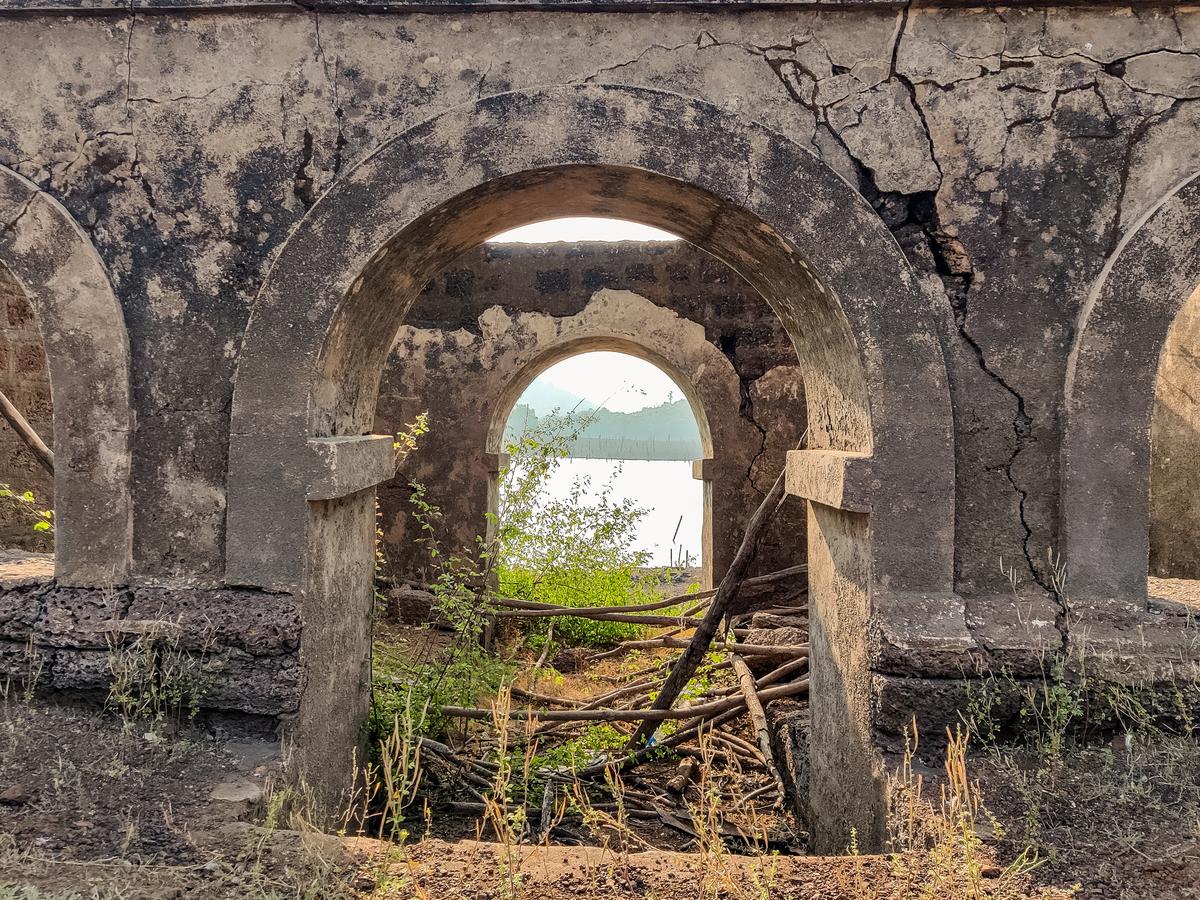
Exploring Curdi is not a new thing, but has gained momentum in the last few years
| Photo Credit:
Soul Travelling
Balaji reveals many lost aspects about Curdi, among which is the fascinating discovery of the 8.2-feet Lajja Gauri or mother goddess, an ancient statue carved out of laterite stone. “This statue was salvaged from the Salaulim River bank and was estimated to have existed for at least 2,500 years. It can now be found in Verna at the Mahalasadevi Temple,” he says. “Later in 2018, another eight-feet tall idol of Betal, or the guardian protector of Curdi, weighing around one tonne was salvaged and is in the custody of the Archaeological Department in Panjim.”
Intrigued with stories of this doomed village we finally return. Whether or not Curdi keeps making its reappearance, one thing is certain…..its stories and memories will live on.
The last guided trail in Curdi will be on Sunday, June 2. To book a spot, call 95294 90245.

